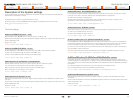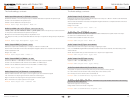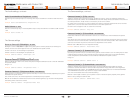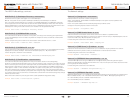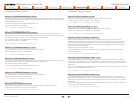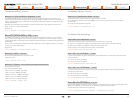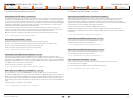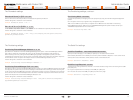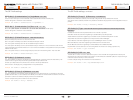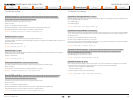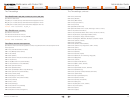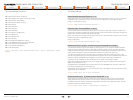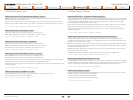
D14324.04—DECEMBER 2009
36
Profile series with Codec C60
Administrator Guide
Contents Introduction Getting started About the menus The settings menu Settings Library Cameras Appendices Contact us
NetworkServices NTP Mode: <Auto/Manual>
The Network Time Protocol (NTP) is used to synchronize the time of the system to a reference time server.
The time server will subsequently be queried every 24th hour for time updates. The time will be displayed
on the top of the screen. The system will use the time to timestamp messages transmitted to Gatekeepers
or Border Controllers requiring H.235 authentication. The system will use the time to timestamp messages
transmitted to Gatekeepers or Border Controllers that requires H.235 authentication. It is also used for
timestamping Placed Calls, Missed Calls and Received Calls.
Auto: The system will use the NTP server, by which address is supplied from the DHCP server in the
network. If no DHCP server is used, or the DHCP server does not provide the system with a NTP server
address, the system will use the static defined NTP server address specified by the user.
Manual: The system will always use the static defined NTP server address specified by the user.
Example: NetworkServices NTP Mode: Manual
NetworkServices SIP Mode: <On/Off>
Determines whether the system should be able to place and receive SIP calls.
On: Set to On to enable the possibility to place and receive SIP calls.This is the default setting.
Off: Set to Off to disable the possibility to place and receive SIP calls.
NOTE! Changes in this setting requires the codec to be restarted.
Example: NetworkServices SIP Mode: On
NetworkServices SNMP CommunityName: <S: 0, 50>
Enter the name of the Network Services SNMP Community. SNMP Community names are used to
authenticate SNMP requests. SNMP requests must have a ‘password’ (case sensitive) in order to receive a
response from the SNMP Agent in the codec. The default password is “public”. If you have the TANDBERG
Management Suite (TMS) you must make sure the same SNMP Community is configured there too. Note!
The SNMP Community password is case sensitive.
Format: String with a maximum of 50 characters.
Example: NetworkServices SNMP CommunityName: “public”
NetworkServices SNMP Host [1..3] Address: <S: 0, 64>
Enter the address of up to three SNMP Managers. All traps will then be sent to the hosts listed.
The system’s SNMP Agent (in the codec) responds to requests from SNMP Managers (a PC program etc.).
SNMP Traps are generated by the SNMP Agent to inform the SNMP Manager about important events. Can
be used to send event created messages to the SNMP agent about different events like: system reboot,
system dialing, system disconnecting, MCU call, packet loss etc. Traps can be sent to multiple SNMP Trap
Hosts.
Format: String with a maximum of 64 characters.
Example: NetworkServices SNMP Host 1 Address: “”
NetworkServices SNMP Mode: <Off/ReadOnly/ReadWrite>
SNMP (Simple Network Management Protocol) is used in network management systems to monitor
network-attached devices (routers, servers, switches, projectors, etc) for conditions that warrant
administrative attention. SNMP exposes management data in the form of variables on the managed
systems, which describe the system configuration. These variables can then be queried (set to ReadOnly)
and sometimes set (set to ReadWrite) by managing applications.
Off: Set to Off when you want to disable the SNMP network service.
ReadOnly: Set to ReadOnly when you want to enable the SNMP network service for queries only.
ReadWrite: Set to ReadOnly when you want to enable the SNMP network service for both queries and
commands.
Example: NetworkServices SNMP Mode: ReadWrite
NetworkServices SNMP SystemContact: <S: 0, 50>
Enter the name of the Network Services SNMP System Contact.
Format: String with a maximum of 50 characters.
Example: NetworkServices SNMP SystemContact: “”
NetworkServices SNMP SystemLocation: <S: 0, 50>
Enter the name of the Network Services SNMP System Location.
Format: String with a maximum of 50 characters.
Example: NetworkServices SNMP SystemLocation: “”
NetworkServices Telnet Mode: <On/Off>
Telnet is a network protocol used on the Internet or local area network (LAN) connections.
On: The Telnet protocol is enabled.
Off: The Telnet protocol is disabled. This is the default factory setting.
Example: NetworkServices Telnet Mode: Off
The Network Services settings, continued... The Network Services settings, continued...
Contents
Introduction
Getting started
About the menus
The Settings menu
The Settings library
Cameras
Appendices
Contact us
The Settings library



